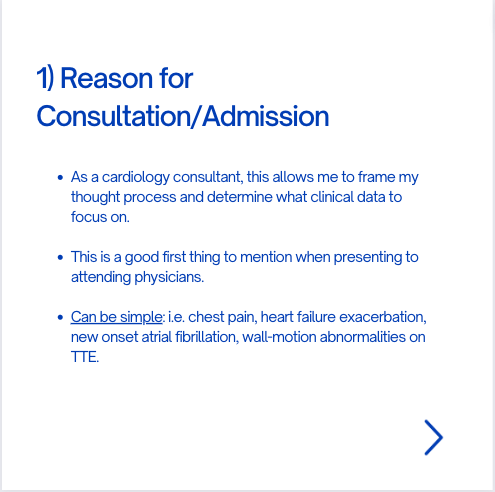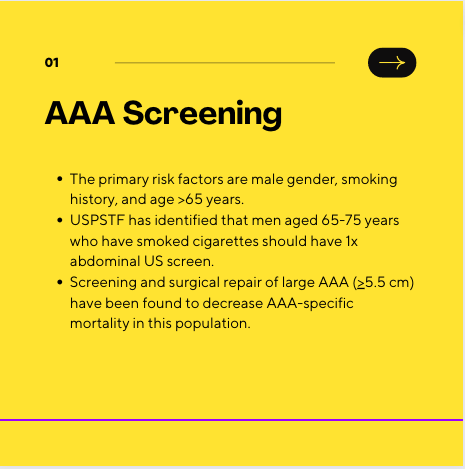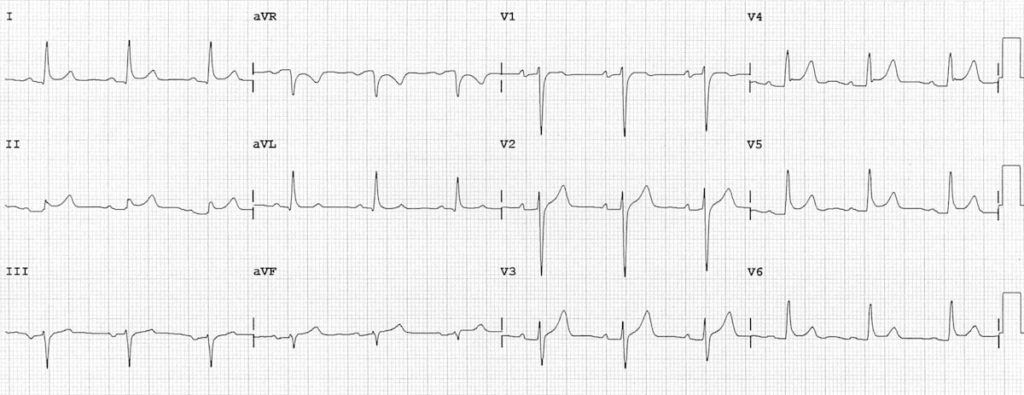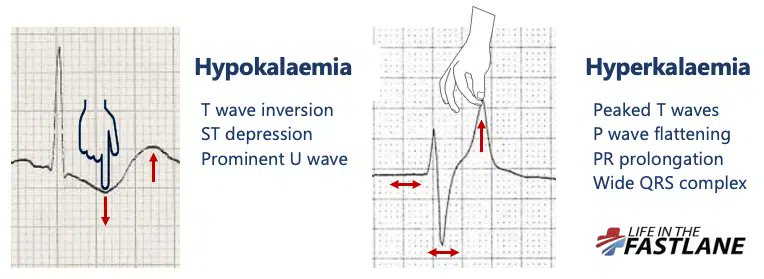Discover and read the best of Twitter Threads about #arjuncardiology
Most recents (24)
As an intern, chart checking new patients was intimidating and time-consuming.
Even as a cardiology fellow, I continue to refine my system.
Here are 7 tips and tricks to help you out!
#arjuncardiology #MedTwitter #MedEd #Cardiotwitter #IMG
Even as a cardiology fellow, I continue to refine my system.
Here are 7 tips and tricks to help you out!
#arjuncardiology #MedTwitter #MedEd #Cardiotwitter #IMG

Studying for the IM Boards and Step 2 CK can be challenging.
Here are some of my notes that can help you.
Part #24: Ophthalmology : 5 High-yield facts!
#arjuncardiology #medtwitter #MedEd #IMG
Here are some of my notes that can help you.
Part #24: Ophthalmology : 5 High-yield facts!
#arjuncardiology #medtwitter #MedEd #IMG

During my Internal Medicine training, I wrote 100s of History and Physicals (H&Ps).
Now as a Cardiology fellow, I read every single H&P for a new consult.
Here are 7 tips and tricks for effective H&Ps. #arjuncardiology #MedTwitter #MedEd #Cardiotwitter #IMG
Now as a Cardiology fellow, I read every single H&P for a new consult.
Here are 7 tips and tricks for effective H&Ps. #arjuncardiology #MedTwitter #MedEd #Cardiotwitter #IMG

Studying for medical exams can be challenging.
Here are some of my notes I used to study for the IM Boards. Also high-yield for Step 2 CK!
Part #23: Dermatology: 5 High-yield facts! #arjuncardiology #medtwitter #MedEd #IMG
Here are some of my notes I used to study for the IM Boards. Also high-yield for Step 2 CK!
Part #23: Dermatology: 5 High-yield facts! #arjuncardiology #medtwitter #MedEd #IMG

Studying for medical exams can be challenging.
Here are some of my notes I used to study for the IM Boards. Also high-yield for Step 2 CK!
Part #22: Dermatology: 5 High-yield facts! #arjuncardiology #medtwitter #MedEd #IMG
Here are some of my notes I used to study for the IM Boards. Also high-yield for Step 2 CK!
Part #22: Dermatology: 5 High-yield facts! #arjuncardiology #medtwitter #MedEd #IMG

In order to become a sub-specialist, it is important to first be a good internist!
Here are some of my notes I used to study for the Internal Medicine Boards.
Part #1: 7 High-yield facts!
#arjuncardiology #medtwitter #MedEd #IMG
Here are some of my notes I used to study for the Internal Medicine Boards.
Part #1: 7 High-yield facts!
#arjuncardiology #medtwitter #MedEd #IMG

One of the most important diagnostic tests in Cardiology to interpret is the EKG. Here are my thoughts and notes. Let me know what you think!
Thread #19: Pericarditis
#arjuncardiology #medtwitter #CardioTwitter #MedEd #IMG
Thread #19: Pericarditis
#arjuncardiology #medtwitter #CardioTwitter #MedEd #IMG
One of the most important diagnostic tests in Cardiology to interpret is the EKG. Here are my thoughts and notes.
Let me know what you think!
Thread #18: Electrolyte Abnormalities #arjuncardiology #medtwitter #CardioTwitter #MedEd #IMG
Let me know what you think!
Thread #18: Electrolyte Abnormalities #arjuncardiology #medtwitter #CardioTwitter #MedEd #IMG
One of the most important diagnostic tests in Cardiology to interpret is the EKG.
Here are my thoughts and notes. Will continue to this thread. Let me know what you think!
Thread #13: Inferior, Posterior, RV Infarction
#arjuncardiology #medtwitter #CardioTwitter #MedEd #IMG
Here are my thoughts and notes. Will continue to this thread. Let me know what you think!
Thread #13: Inferior, Posterior, RV Infarction
#arjuncardiology #medtwitter #CardioTwitter #MedEd #IMG
One of the most important diagnostic tests in Cardiology to interpret is the EKG.
Here are my thoughts and notes. Will continue to this thread. Let me know what you think!
Thread #12: Q-waves
#arjuncardiology #medtwitter #CardioTwitter #MedEd #IMG
Here are my thoughts and notes. Will continue to this thread. Let me know what you think!
Thread #12: Q-waves
#arjuncardiology #medtwitter #CardioTwitter #MedEd #IMG
One of the most important diagnostic tests in Cardiology to interpret is the EKG.
Here are my thoughts and notes. Will continue to this thread. Let me know what you think!
Thread #11: Myocardial Ischemia
#arjuncardiology #medtwitter #CardioTwitter #MedEd #IMG
Here are my thoughts and notes. Will continue to this thread. Let me know what you think!
Thread #11: Myocardial Ischemia
#arjuncardiology #medtwitter #CardioTwitter #MedEd #IMG
One of the most important diagnostic tests in Cardiology to interpret is the EKG.
Here are my thoughts and notes. Will continue to this thread. Let me know what you think!
Thread #10: Fascicular Blocks
#arjuncardiology #medtwitter #CardioTwitter #MedEd #IMG
Here are my thoughts and notes. Will continue to this thread. Let me know what you think!
Thread #10: Fascicular Blocks
#arjuncardiology #medtwitter #CardioTwitter #MedEd #IMG
Fascicular Blocks:
- Left bundle branch system: sub-divided into an anterior & posterior fascicle.
- Hemi-block does not widen the QRS complex markedly (compared to a RBBB or LBBB)
- Left bundle branch system: sub-divided into an anterior & posterior fascicle.
- Hemi-block does not widen the QRS complex markedly (compared to a RBBB or LBBB)
One of the most important diagnostic tests in Cardiology to interpret is the EKG.
Here are my thoughts and notes. Will continue to this thread. Let me know what you think!
Thread #9: Left Bundle Branch Block (LBBB)
#arjuncardiology #medtwitter #CardioTwitter #MedEd #IMG
Here are my thoughts and notes. Will continue to this thread. Let me know what you think!
Thread #9: Left Bundle Branch Block (LBBB)
#arjuncardiology #medtwitter #CardioTwitter #MedEd #IMG
One of the most important diagnostic tests in Cardiology to interpret is the EKG.
Here are my thoughts and notes. Will continue to this thread. Let me know what you think!
Thread #8: Right Bundle Branch Block (RBBB)
#arjuncardiology #medtwitter #CardioTwitter #MedEd #IMG
Here are my thoughts and notes. Will continue to this thread. Let me know what you think!
Thread #8: Right Bundle Branch Block (RBBB)
#arjuncardiology #medtwitter #CardioTwitter #MedEd #IMG
One of the most important diagnostic tests in Cardiology to interpret is the EKG.
Here are my thoughts and notes. Will continue to this thread. Let me know what you think!
Thread #7: Ventricular Hypertrophy
#arjuncardiology #medtwitter #CardioTwitter #MedEd #IMG
Here are my thoughts and notes. Will continue to this thread. Let me know what you think!
Thread #7: Ventricular Hypertrophy
#arjuncardiology #medtwitter #CardioTwitter #MedEd #IMG
Atrial and Ventricular Enlargement:
- Both dilation & hypertrophy usually result in chronic pressure and volume overload on the heart muscle
- Pathological hypertrophy & dilation are often accompanied by fibrosis (scarring); can lead to arrhythmias and heart failure.
- Both dilation & hypertrophy usually result in chronic pressure and volume overload on the heart muscle
- Pathological hypertrophy & dilation are often accompanied by fibrosis (scarring); can lead to arrhythmias and heart failure.
One of the most important diagnostic tests in Cardiology to interpret is the EKG.
Here are my thoughts and notes. Will continue to this thread. Let me know what you think!
Thread #6: Atrial Abnormality
#arjuncardiology #medtwitter #CardioTwitter #MedEd #IMG
Here are my thoughts and notes. Will continue to this thread. Let me know what you think!
Thread #6: Atrial Abnormality
#arjuncardiology #medtwitter #CardioTwitter #MedEd #IMG
Atrial and Ventricular Enlargement:
- Both dilation & hypertrophy usually result in chronic pressure and volume overload on the heart muscle
- Pathological hypertrophy & dilation are often accompanied by fibrosis (scarring); can lead to arrhythmias and heart failure.
- Both dilation & hypertrophy usually result in chronic pressure and volume overload on the heart muscle
- Pathological hypertrophy & dilation are often accompanied by fibrosis (scarring); can lead to arrhythmias and heart failure.
One of the most important diagnostic tests in Cardiology to interpret is the EKG.
Here are my thoughts and notes. Will continue to this thread. Let me know what you think!
Thread #5: Axis Deviation
#arjuncardiology #medtwitter #CardioTwitter #MedEd #IMG
Here are my thoughts and notes. Will continue to this thread. Let me know what you think!
Thread #5: Axis Deviation
#arjuncardiology #medtwitter #CardioTwitter #MedEd #IMG
One of the most important diagnostic tests in Cardiology to interpret is the EKG.
Here are my thoughts and notes. Will continue to this thread. Let me know what you think!
Thread #4: ECG Segments
#arjuncardiology #medtwitter #CardioTwitter #MedEd #IMG
Here are my thoughts and notes. Will continue to this thread. Let me know what you think!
Thread #4: ECG Segments
#arjuncardiology #medtwitter #CardioTwitter #MedEd #IMG
General Principles:
- Positive deflection: wave of depolarization towards positive pole of that lead
- Negative deflection: wave of depolarization towards negative pole of that lead
- Biphasic deflection: wave of depolarization is perpendicular to a lead
- Positive deflection: wave of depolarization towards positive pole of that lead
- Negative deflection: wave of depolarization towards negative pole of that lead
- Biphasic deflection: wave of depolarization is perpendicular to a lead

Normal Sinus P-wave:
- Atrial depolarization that marks spontaneous depolarization of pacemakers cells in the right atrium
- Should be negative P-wave in aVR and upright in lead II
- Can communicate 'sinus rhythm with 1:1 AV conduction'
- Atrial depolarization that marks spontaneous depolarization of pacemakers cells in the right atrium
- Should be negative P-wave in aVR and upright in lead II
- Can communicate 'sinus rhythm with 1:1 AV conduction'
One of the most important diagnostic tests in Cardiology to interpret is the EKG.
Here are my thoughts and notes. Will continue to this thread. Let me know what you think!
Thread #3: ECG Leads
#arjuncardiology #medtwitter #CardioTwitter #MedEd #IMG
Here are my thoughts and notes. Will continue to this thread. Let me know what you think!
Thread #3: ECG Leads
#arjuncardiology #medtwitter #CardioTwitter #MedEd #IMG
One of the most important diagnostic tests in Cardiology to interpret is the EKG.
Here are my thoughts and notes. Will continue to this thread. Let me know what you think!
#arjuncardiology #medtwitter #CardioTwitter #MedEd #IMG
Here are my thoughts and notes. Will continue to this thread. Let me know what you think!
#arjuncardiology #medtwitter #CardioTwitter #MedEd #IMG
As a Cardiology fellow, we get a lot of consults for hypertensive urgency/emergency.
Part 4: Clinical Consequences of Hypertensive Urgency/Emergency
-thread 🧵-
#arjuncardiology #MedTwitter #Cardiotwitter #IMG #MedEd
Part 4: Clinical Consequences of Hypertensive Urgency/Emergency
-thread 🧵-
#arjuncardiology #MedTwitter #Cardiotwitter #IMG #MedEd
1) Hypertensive Encephalopathy
- Cerebral edema is induced by markedly elevated blood pressures
- Dysregulation of auto-regulatory capabilities of the brain
- Characterized by headache, irritability, and altered mental status
- Treatment of choice: Nitroprusside/Labetalol
- Cerebral edema is induced by markedly elevated blood pressures
- Dysregulation of auto-regulatory capabilities of the brain
- Characterized by headache, irritability, and altered mental status
- Treatment of choice: Nitroprusside/Labetalol
As a Cardiology fellow, we get a lot of consults for hypertensive urgency/emergency.
Part 3B: Therapy
-thread 🧵-
#arjuncardiology #MedTwitter #Cardiotwitter #IMG #MedEd
Part 3B: Therapy
-thread 🧵-
#arjuncardiology #MedTwitter #Cardiotwitter #IMG #MedEd
Fenoldopam:
- Used mainly by anesthesiologists to control BP intra-operatively
- Selective peripheral dopamine-1 receptor agonist approved for the management of severe HTN
- Arterial vasodilator w/ relatively short half-life
- Contraindicated w/ glaucoma b/c can raise ICP
- Used mainly by anesthesiologists to control BP intra-operatively
- Selective peripheral dopamine-1 receptor agonist approved for the management of severe HTN
- Arterial vasodilator w/ relatively short half-life
- Contraindicated w/ glaucoma b/c can raise ICP
Nicardipine:
- Dihydropyridine calcium channel blocker that inhibits vascular smooth muscle contraction
- Little to no activity on the AV or sinus node
- Does not raise ICP and reduces cerebral ischemia
- Contraindicated w/ advanced HF, acute MI, and renal failure
- Dihydropyridine calcium channel blocker that inhibits vascular smooth muscle contraction
- Little to no activity on the AV or sinus node
- Does not raise ICP and reduces cerebral ischemia
- Contraindicated w/ advanced HF, acute MI, and renal failure
As a Cardiology fellow, we get a lot of consults for hypertensive urgency/emergency.
Part 3A: Therapy
-thread 🧵-
#arjuncardiology #MedTwitter #Cardiotwitter #IMG #MedEd
Part 3A: Therapy
-thread 🧵-
#arjuncardiology #MedTwitter #Cardiotwitter #IMG #MedEd
Therapy:
- The presence of acute/rapidly progressive end-organ damage and not the absolute BP determines whether the situation is an emergency
- Goals should be based on mean arterial pressure (MAP) with close monitoring in ICU setting with arterial line
- The presence of acute/rapidly progressive end-organ damage and not the absolute BP determines whether the situation is an emergency
- Goals should be based on mean arterial pressure (MAP) with close monitoring in ICU setting with arterial line
Therapy:
- In general, should reduce no more than 25% of MAP in the first 24 hours; after this time will be more gradual and allow auto-regulatory mechanisms to reset
- Exceptions: more aggressive BP reduction in aortic dissection, post-operative bleeding, and pulmonary edema
- In general, should reduce no more than 25% of MAP in the first 24 hours; after this time will be more gradual and allow auto-regulatory mechanisms to reset
- Exceptions: more aggressive BP reduction in aortic dissection, post-operative bleeding, and pulmonary edema
As a Cardiology fellow, we get a lot of consults for hypertensive urgency/emergency.
Part 2: Etiology, Presentation, Diagnosis
-thread 🧵-
#arjuncardiology #MedTwitter #Cardiotwitter #IMG #MedEd
Part 2: Etiology, Presentation, Diagnosis
-thread 🧵-
#arjuncardiology #MedTwitter #Cardiotwitter #IMG #MedEd
Etiology:
- 30-40% with hypertensive crisis have an identifiable underlying cause
- Should evaluate for secondary causes
- Common scenario: Inadequate treatment/medication non-compliance
- Risk factors: Male, low socioeconomic, tobacco use, oral OCP use
- 30-40% with hypertensive crisis have an identifiable underlying cause
- Should evaluate for secondary causes
- Common scenario: Inadequate treatment/medication non-compliance
- Risk factors: Male, low socioeconomic, tobacco use, oral OCP use
Underlying Contributing Pathology:
- Renal parenchymal disease
- Renovascular HTN
- Collagen vascular disease
- Scleroderma
- Vasculitis
- Pre-eclampsia
- Untreated OSA
- Renal parenchymal disease
- Renovascular HTN
- Collagen vascular disease
- Scleroderma
- Vasculitis
- Pre-eclampsia
- Untreated OSA





































